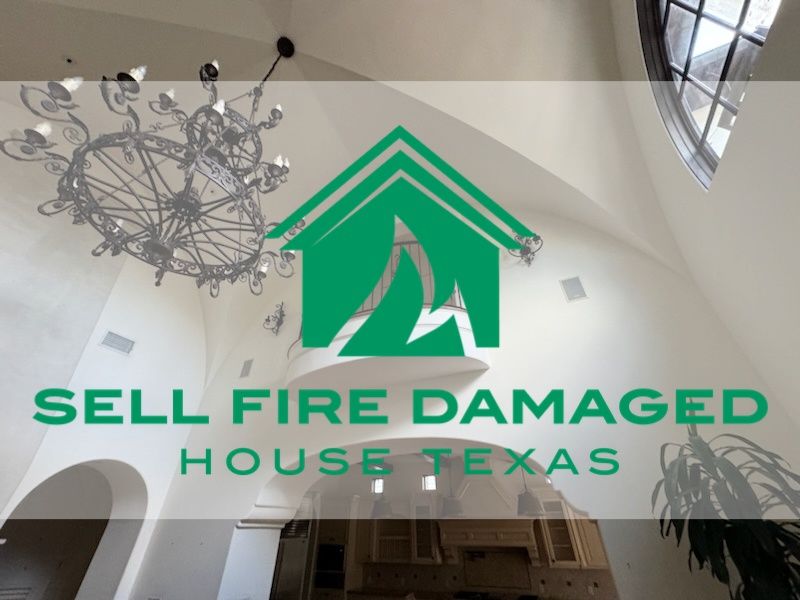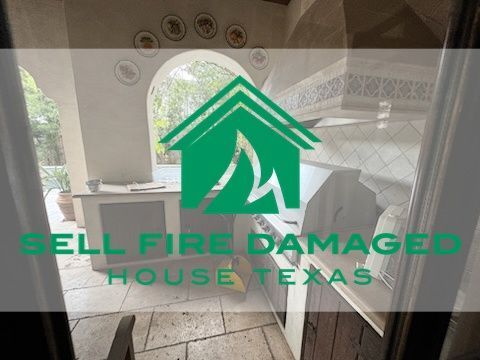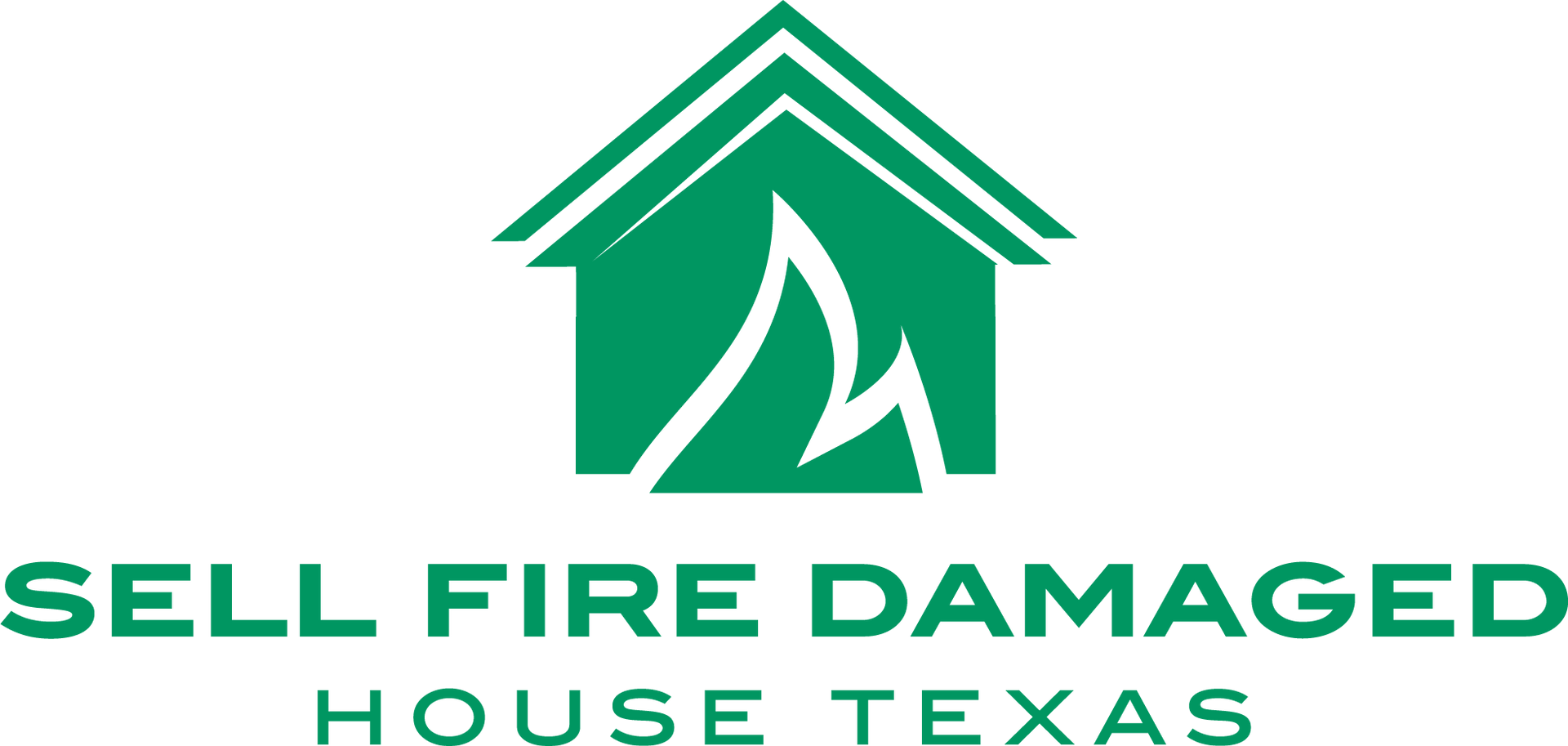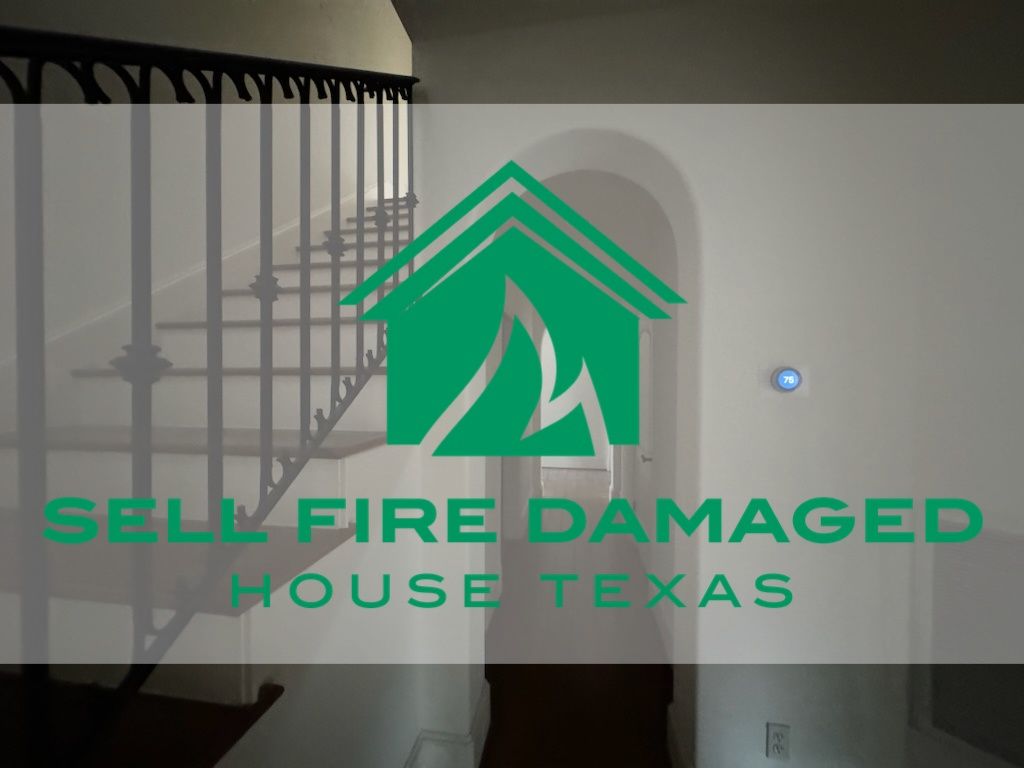What To Throw Away After Smoke Damage: Post-Fire Cleanup In Texas
Published on February 05th, 2025
Mia Bennett
AUTHOR
Free Offer Form
It's important to figure out what to keep and what to throw away after a fire because a lot of personal belongings can get damaged by smoke.
Things like food, medicine, makeup, clothes, bedding, and any broken smoke detectors or appliances should be tossed out — especially if they were directly exposed to the heat.
Smoke can seep into every part of your home and leave harmful residues and odors that can cause health issues and contaminate your household items.
Making sure to get rid of these items helps keep your home safe.
In this article, we'll discuss what to throw away after smoke damage, how to recognize smoke damage, and how to salvage items that can be restored.
Unveiling Smoke Damage In Texas
Smoke damage refers to harm caused by smoke after a fire. Even if the house fire was small and only in one room, smoke can still spread to other parts of the house.
Significantly damaged items can usually be spotted by their discoloration, soot particles, corrosive damage, and unpleasant odor.
However, identifying smoke or fire damage can be tricky because the damage can spread to both what you can see and can't, like inside vents or behind walls.
It's important to recognize soot damage and its hazards to know which items are worth keeping and which should be thrown away after a fire.
Hazards of Smoke Damage
Smoke or fire damage can pose two main hazards: health consequences and risks to building structures.
Breathing in smoke can be really bad for your health due to its dangerous chemical composition.
However, besides making people sick, smoke can also harm your house by damaging metal and electrical wires.
Health Consequences
Smoke damage from a house fire can lead to serious health problems, especially for children, elderly people, and those with existing health issues.
Health consequences include:
- Respiratory problems like coughing, wheezing, and difficulty breathing.
- Eye, nose, and throat irritation.
- Skin irritation and rashes.
- Headaches and dizziness.
- Long-term respiratory illnesses like chronic bronchitis, asthma, etc.
- Possible changes in heart function.
Risks to Building Structures
Smoke damage from a house fire can significantly weaken building structures and damage surfaces, which may lead to long-term problems and costly repairs.
Risks to building structures include:
- Structural weakening from heat affecting frames and rafters.
- Soot can eat away at metal and ruin materials.
- Damage to insulation and wiring, raising fire and electrical risks.
- Concrete can crack because of the heat.
- Water and firefighting chemicals can also cause damage.
- Stains and discoloration on surfaces and walls.
Recognizing Smoke Damage
The smell of smoke itself is a clear sign that there's soot damage.
However, paying attention to the obvious and hidden indicators, along with the smell, is key to identifying smoke damage and knowing what needs to be cleaned or thrown away after a fire.
Obvious Indicators
When fire damages items in your home, it leaves soot that can be sticky and tough to remove.
This soot, along with other clear signs of damage, indicates that deep cleaning or help from a restoration company might be necessary.
Obvious smoke or fire damage indicators include:
- Soot stains or black specks of dust
- Odd odor
- Blistered paint
- Warped or melted plastics
- Char marks on hardwood floors
- Corrosion of metal surfaces
- Etching on glass and metal surfaces
- Discoloration on carpets, upholstered furniture, and drywall
Hidden Indicators
Smoke damage from a house fire can be tricky because they can hide behind walls and vents. This means they might not show up immediately after the fire.
Hidden indicators of fire damage include:
- Residue inside electronics and appliances.
- A lingering smoke smell.
- Discoloration behind pictures and under carpets.
- Tarnishing of hidden metal surfaces.
- Dusty drawers and cupboards.
- Damage to the structural integrity of concealed wood.
- Chemical changes in painted surfaces due to fire's heat.
- Mold and mildew growth.
Smoke Odor as a Sign
The smoke smell in a house is a strong sign of fire damage, often lasting long after the fire is put out and leaving soot everywhere. It should be strongest in parts of the house hit hardest by the fire.
This stubborn and hard-to-remove smell suggests serious damage that needs extensive cleaning or disposal of affected things.
Even with good ventilation or air circulation, a lasting smoke scent is a warning sign of hidden issues, and constant exposure to it can be harmful to your health.
If you find
removing fire smoke odor in home difficult with just dish soap and hot water, try using a stronger cleaning mix from household items like
baking soda
or a cleaning solution like tri-sodium phosphate.
Discarding Items After Smoke Damage In Texas?
After fire damage, throw away items like exposed food, medicine, and smoke-touched belongings.
Apart from possibly contaminated food like in a pantry, dispose of food inside fridges too. Carpets, clothing, and plastic items affected by smoke or water damage should be discarded.
While some things like hardwood floors might be saved, smoke or fire detectors and appliances often need replacing to ensure your home's safety.
Edible Items
Both perishable and non-perishable foods, including those in fire-damaged refrigerators, should be discarded.
Even if the fire didn't reach your fridge, the power outage caused by the fire could cause the food to spoil within a few hours.
Perishable and Non-Perishable Food
Throw away any food items that have been exposed to fire or fire extinguisher dust.
Jarred or canned foods might seem safe, but the high heat from a fire can spoil these items, too.
Even sealed packages can absorb smoke and contaminate food within. This is because the high heat of the fire can activate bacteria that cause food spoilage.
Dispose of charred food in open containers, bulging or rusting cans, and food in permeable packaging such as thin plastic bags, as they can become easily contaminated.
Food Stored in Refrigerators
If smoke got into your fridge during a fire, you might need to throw out all of the food within.
Smoke can get past seals and spoil the food in just a few hours. But if your fridge stayed closed and remained powered throughout the fire, check each item carefully.
Also, get rid of food if the fridge was turned off and remained warm for over two hours or if the frozen food has thawed without ice crystals.
Throw away any food if it smells strange, the fridge smells smoky, or if the fridge itself has soot inside.
Personal Belongings
Get rid of personal items like medicines, beauty products, clothes, and bedding that have been exposed to smoke.
These items can pick up harmful toxins and smells from the smoke that makes them unsafe.
Pharmaceuticals and Beauty Products
After a fire, inspect your medicine cabinet and cosmetics organizer for any soot damage. If anything looks melted or warped from the heat, throw it away after a fire.
It's important to throw away all medicines after a fire, even if they look okay, as the smoke from a fire can contaminate the ingredients and make them unsafe.
Using these spoiled medicines and beauty products could harm your skin, hair, or health. It's better to be safe and get rid of them.
Apparel, Textiles, and Bed Linen
You should throw away any clothes, textiles, and bed sheets that smell like soot or are damaged. Smoke gets into fabric and leaves a smell that's hard to remove.
If your clothing and linens smell like smoke or have visible fire damage, they should be discarded.
While some lightly affected items might be saved, fabrics that have been heavily damaged by fire are not salvageable due to the flammability of these materials.
However, if items were spared direct fire damage, dry cleaning might still save them.
Toys and Children's Items
If toys or children's items get smoke-damaged, throwing them out is safest.
Soot can stick to these items and be harmful, especially for stuffed toys and anything a child might put in their mouth.
If you can't clean something completely, it's better to get rid of it. Kids are
more sensitive to soot, so replacing damaged toys is the best way to keep them safe.
Domestic Items
Domestic items like plastic products, rugs, carpets, upholstery, and curtains must typically be thrown away.
Because they're porous, smoke can become deeply embedded into these items, which means it is very hard to remove soot and smell.
Plastic-Based Products
If plastic items like bottles, tumblers, containers, and utensils sustain fire damage, throw them out — as they are easily replaceable.
Smoke from a house fire can make the plastic unsafe by changing its structure. Plastics absorb smoke and soot, which is hard to clean and harmful to use.
Even if they look okay, burning plastic releases bad smells and toxins, so to avoid risks from lingering odors, it's safer to discard and replace these items.
Rugs and Carpets
Fire and soot can easily permeate rugs and carpets. These items are hard to clean thoroughly, especially if they're larger pieces.
Your carpets may appear fine, but the sooty water from the fire extinguisher can seep within and raise the risk of harmful mold.
While dry cleaning might save lightly damaged rugs and carpets, those heavily damaged are usually beyond repair and should be thrown away after a fire.
Upholstery and Curtains
Just like carpets, furniture and curtains can also absorb smoke odors, residues, and chemical substances that're difficult to remove. Exposure to heat or flames may further weaken them.
If there's any doubt about their condition, getting rid of these items is safer, as smoke can deeply penetrate upholstery.
Replace them to ensure your family's well-being and avoid lingering odors or potential health concerns.
Smoke Detectors and Appliances
Broken smoke detectors and appliances are some of the most important items to throw away after a fire.
On top of knowing where to place smoke detectors, it's important to get new smoke detectors to maintain safety standards around your dwelling.
Similarly to smoke detectors, appliances may pose a risk of electrical faults or may not work properly after exposure to smoke.
If you choose to keep your detectors and appliances, check them for frayed wires or dead batteries to avoid triggering another house fire.
Salvaging Items After Smoke Damage In Texas

Not everything needs to be thrown away. It's important to also identify what is salvageable after a house fire and save them with the right restoration techniques.
Some of these durable items include wooden floors, kitchen utensils, pots, and select electronic devices.
Durable Materials
After smoke damage, durable items made of metal, glass, and ceramics can often be saved because they resist heat and smoke well.
Resilient wood flooring and some electronic devices can also survive fires. However, if these materials melt, change shape, or crack, it's best to promptly get rid of them.
Wooden Floors
Hardwood floors, despite being porous, can usually be salvaged if the damage isn't too severe, thanks to their durability.
This is also because hardwood floors usually have a protective coating that helps prevent fire or water damage from penetrating too deeply.
Even if there are no burn marks or charring, cleaning floors with oil soap followed by sanding and refinishing can revive their appearance.
Kitchen Utensils and Pots
After smoke damage, metal, glass, and ceramic kitchen utensils and pots can be cleaned and used again.
These materials can handle heat and smoke better and be safely disinfected. However, items made of plastic and wood should be thrown out because they soak up smoke.
As long as you clean and disinfect the non-porous items thoroughly, they'll be safe to use.
Electronic Devices
Devices like computers and phones can often survive if the fire didn't directly damage them or they haven't been wet.
Electronics and appliances can often be fixed because some have easily replaceable parts or can be bought or fixed at the device's service centers.
However, it's very important to have a technician check these items to ensure they're safe.
NOTE: Electronics that were turned off during a fire and sufficiently dried before being turned on again may have better chances of being salvageable.
Restoration Techniques
You can repair smoke-damaged items with special DIY cleaning techniques. Otherwise, you can hire professional services.
Essential items for cleanup include white vinegar, dish soap, various cleaning solutions, and warm water to effectively remove smoke residue.
Professional Cleaning Services
Hiring professional cleaners is a good move after smoke damage.
Special tools and methods, such as thermal fogging, are utilized to deeply clean and eliminate smoke odors throughout a structure.
As the name implies, thermal fogging involves heating a deodorizer and spraying it in the form of fog.
Professionals can safely clean clothes and other fabrics, furniture, and electronics. This saves you time and prevents any other damage.
Home-based Cleaning Methods
For minor house fire cleanup, you'll need a few simple ingredients.
Sprinkle baking soda mixed with warm water on your furniture, wait a day, then vacuum it off. Also, wash any covers in cold water.
To remove smoke smells, wipe surfaces with white vinegar, leave baking soda or charcoal in the room to soak up odors, or use sprays to make things smell better.
Assessing Salvageability
To determine whether an item can be salvaged after a fire, check for signs of water or smoke damage first. While some soot stains may be removable, it's best to dispose of a severely damaged item.
When assessing an item, here are some factors to consider:
- Severity: Is the damage minor, or has the smoke deeply penetrated the object?
- Material: Is it made of something that doesn't soak up smoke, like metal or glass, or something that does, like fabric or wood?
- Cleaning: Can you clean it well without making things worse?
- Smoke Smell: If it smells a lot like fire, getting rid of that smell might be tough.
- Health: Could any left-behind smoke particles or smells be bad for your health?
- Value: Is cleaning worth the cost and effort, especially if it means a lot to you?
REMEMBER: If you're unsure how to clean an object or piece of furniture, consider calling a smoke damage restoration company.
Safety Protocols After Smoke Damage In Texas
It's normal to wonder, "How long after a fire can you move back in?" but it's best to put safety first. Avoid cleaning up burnt items yourself due to the potential hazards.
During house restoration, it's important to always wear protective equipment, follow decontamination procedures, know when to call a restoration company and know how to deal with insurance.
Protective Equipment and Measures
When there's smoke or soot damage, it's important to protect yourself from harmful fire residues. As mentioned above, it's best to avoid cleaning scorched items yourself.
However, you may need to handle burned items for proper documentation or cleaning purposes.
Before touching or cleaning smoke-damaged items, wear Personal Protective Equipment (PPE) like coveralls, gloves, masks, and goggles.
The first step in cleaning up after a fire damage is to remove soot damage from floors and walls, using a vacuum designed for smoke or a powerful dry vac.
Open windows and doors to let fresh air in. Remember to avoid using anything that could start another fire, like open flames or space heaters.
Decontamination Procedures
To start the decontamination process, assess the damage and identify any hazardous materials — like chemicals from burning items, asbestos from insulation, or mold and bacteria from dampness.
Doing the decontamination on your own is a bad idea. Note that only trained professionals with proper gear should conduct the decontamination process.
They will clean, disinfect, and remove severely fire-damaged materials.
However, you can do some minor decontamination of surfaces with soap and hot water, vacuum textiles and other fabrics, and dispose of items that cannot be cleaned.
Time to Call Professionals
Home remedies like white vinegar can only go so far.
If the fire damage is severe, the smells are sticking around, or you encounter dangerous materials like asbestos, call professional cleaners.
They have the right tools and know-how to clean up safely and thoroughly. They can also fix any damage to the building itself.
It's also a good idea to consult with a smoke damage restoration company to assess the damage and get an expert opinion on the best cleaning solution.
Dealing with Insurance Coverage
First, take pictures and videos of everything damaged and write down a list of these items. This is important for your insurance claim.
Then, call your insurance company to tell them what happened and give them all the details and proof of damage.
Ensure you understand what your insurance covers and act quickly to get the help you need to repair or replace your soot- or fire-damaged belongings.

Frequently Asked Questions
Find out more about what to throw away after smoke damage here.
What Are the Health Risks Associated With Smoke Damage?
The health risks associated with smoke or fire damage include the following:
- Respiratory problems
- Eye, nose, and throat irritation
- Skin rashes
- Headaches
- Dizziness
- Long-term respiratory illnesses like asthma
- Possible changes in heart function
How Can I Identify Items That Have Been Damaged by Smoke?
Items damaged by smoke or fire may show obvious signs like soot stains, black dust, odd odors, blistered paint, warped plastics, char on floors, and corrosion on metal surfaces.
However, there can also be hidden damage, including residue in electronics, persistent odors, discoloration behind pictures, and tarnishing of metals.
What Types of Food Should I Throw Away After Smoke Damage?
Throw away any food that was left outside during the fire and exposed to the fire's heat, including those in damaged refrigerators.
This also includes food items in open containers, bulging or rusting cans, and food stored in permeable packaging like thin plastic bags.
Can I Clean and Reuse Any Items After Smoke Damage?
Yes, durable items made of metal, glass, and ceramics can often be saved and cleaned, especially if they haven't melted, changed shape, or cracked.
Kitchen utensils and pots made of metal, glass, and ceramics can also be reused after thorough cleaning and disinfection.
When Should I Contact a Professional for Smoke Damage Cleanup?
Contact a professional for a smoke damage restoration company if the soot or fire damage is extensive, involves hazardous materials like asbestos, or when dealing with valuable items.
Professionals have the necessary tools, knowledge, and safety equipment to effectively and safely clean and restore damaged properties.
Conclusion
After a fire or smoke damage, figuring out what to clean and toss is important. Cleaning up after smoke can seem hard, but knowing what to do makes it easier and can keep you safe.
Here's a quick recap of the items you should throw away
after a fire incident:
- Edible Items: Any perishable and non-perishable food left and those stored in the refrigerators.
- Personal Belongings: Medicines, cosmetics, clothing, textiles, bed linen, and other fabrics.
- Toys and Children's Items: Stuffed animals and plastic toys should typically be tossed.
- Household or Domestic Items: Plastic-based products, rugs, carpets, upholstery, and curtains.
- Smoke Detectors and Appliances: Especially those with broken wirings.
Remember, always put your safety first. If you're unsure what to do or which items to throw away after a fire, it's best to ask experts for help.

